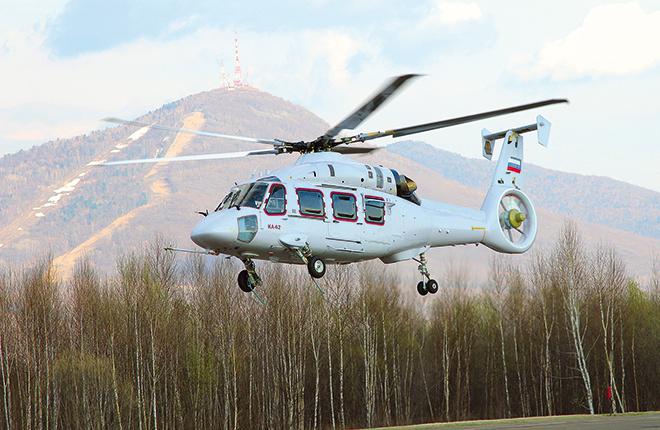Ka-62 makes first take-off

A prototype of the medium-sized multi-use helicopter Ka-62 for the first time took off on 28 April at the Progress Arsenyev Aviation Company (a subsidiary of Russian Helicopters), located in Russia’s Far East. The 10-minute lift in a hover mode was part of the factory flight testing and was completed successfully, reported Russian Helicopters.
Development of the Ka-62 was launched in 1992; the first prototype was shown at HeliRussia 2012 exhibition. The aircraft is planned to be equipped with two Ardiden 3G turboshaft engines, with 1,775 horsepower at takeoff. The engines are not the only foreign components used in the manufacture of the Ka-62; the aircraft’s transmission is developed by Austrian specialist Zoerkler.
According to data from the manufacturer, the maximum carrying capacity of the aircraft is expected to make up 2,200-2,500 kg, while the maximum takeoff weight will be 6,500 kg. The helicopter will have a maximum speed of 310 km/h and a cruising speed of 290 km/h. The range of the craft is set at 720 km with use of the main tank, and 1,135 km with additional tanks.
As reported earlier, the Ka-62 is expected to be certified in 2017.
According to Russian Helicopters, the Ka-62 is designed for a wide range of tasks, including transporting passengers, rescue operations, and use in the oil and gas sector.
Ссылки по теме
- Для того, чтобы оставить комментарий, не привязанный к социальной сети, войдите или зарегистрируйтесь на нашем сайте.
CIS & Russian Aviation News And Insights
- Russian airlines’ traffic drops two per cent so far in 2025
- Ural Airlines’ operational performance affected by A320neo groundings
- Volga-Dnepr Group founder warns the company may be nationalized
- Aeroflot revenue grew 10 per cent during first half of the year
- Russian airlines’ January through July traffic and RPKs decline
- Aeroflot Bonus members can now access the full range of services
- A manufacturing defect has been discovered in Superjet 100 aircraft









